A list of the world's most famous volcanoes and volcanic eruptions, with locations, pictures and facts.
- You can find out more about volcanoes and why they erupt on this page: Volcano Facts
Page Index
Famous Volcanoes: Introduction
Volcanoes are mountains formed by magma (molten rock) emerging from cracks in the Earth’s thin outer crust.
Most volcanoes appear along the sides of the huge plates (known as tectonic plates) that make up the surface of the world – either where the plates are moving apart, or where they are moving together and one plate is forced under another.
During a volcanic eruption, molten rock, ash and toxic gases are expelled from a magma chamber under the ground, often with great force.
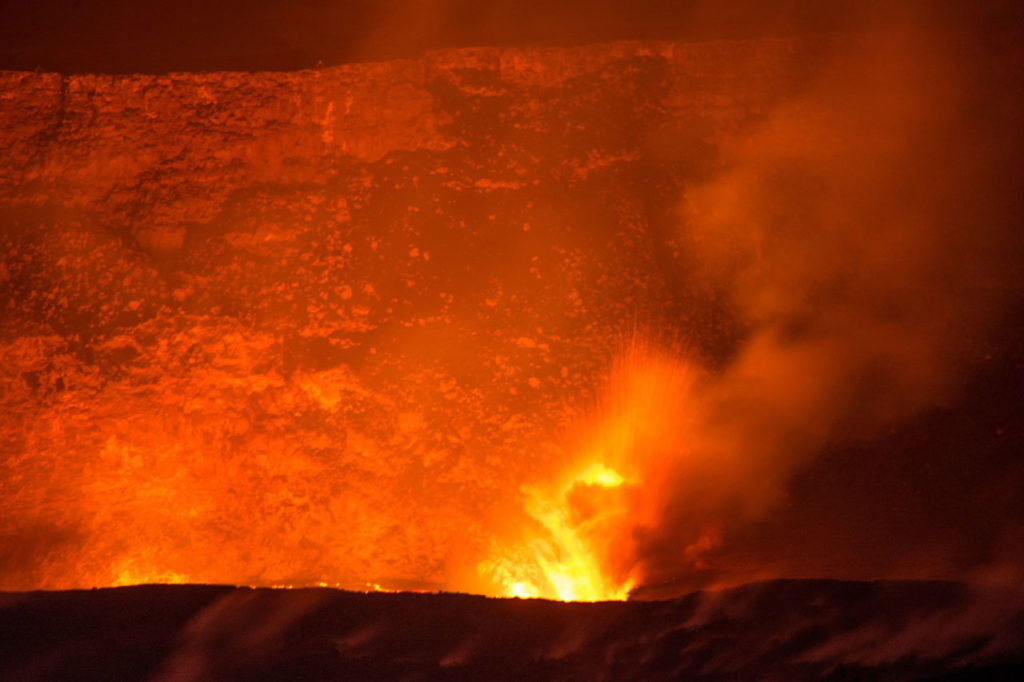
A deadly cloud of rock fragments and hot gas known as a pyroclastic flow can flow from a volcano at up to 430 mph (700 km/h), wiping out everything in its path.
Unsurprisingly, volcanic eruptions can be extremely destructive, especially when they occur near cities or towns.
In the list of famous volcanoes below we’ve included not only famous volcanic eruptions from history, such as that of Mount Vesuvius in AD 79, but also recent eruptions, such as those of Mount St Helen in 1980, and Eyjafjallajökull (an Icelandic volcano) in 2010.
List of Famous Volcanoes
Mount Vesuvius, Italy
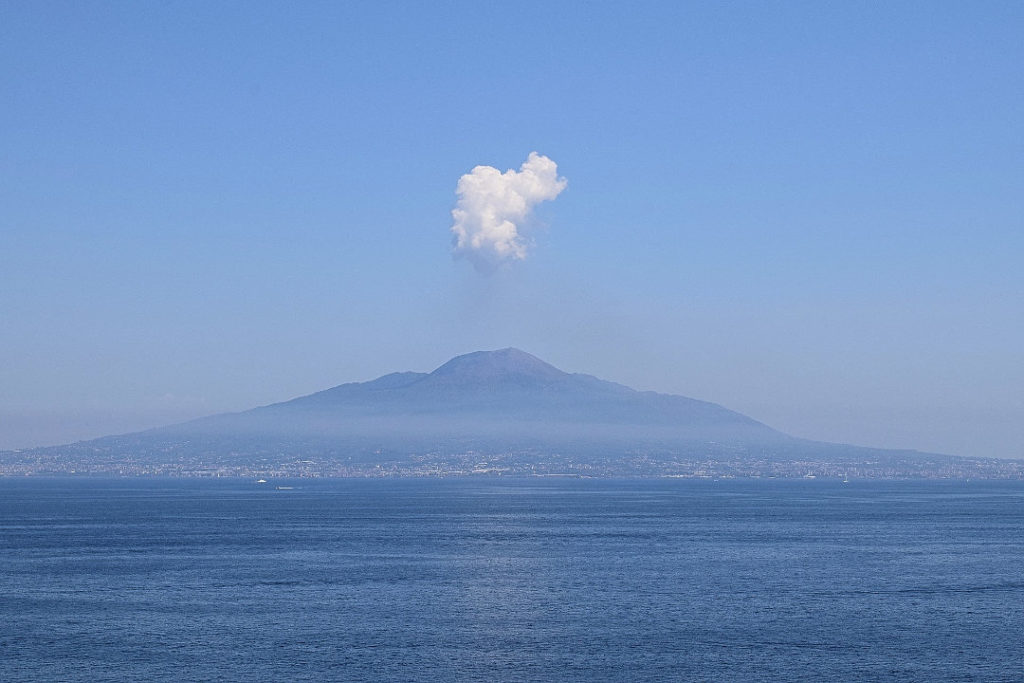
Located near Naples in Italy, Mount Vesuvius is perhaps the world's most famous volcano.
Almost two thousand years ago, in early autumn of AD 79, Mount Vesuvius violently erupted. The eruption continued for two days, causing huge amounts of volcanic ash to rain down on the surrounding area.
At times during the eruption, molten rock and hot ash were being ejected from the volcano at a rate of 1.5 million tons per second.
The nearby city of Pompeii, together with several other settlements, was engulfed by the volcanic fallout. Many people were trapped inside the city, unable to escape.
Watch the animation below to get an idea of what it must have been like living in Pompeii on that fateful day:
The ash blanketed Pompeii, rapidly covering it and creating an airtight seal that preserved buildings, artifacts, and even the impressions of bodies, providing modern-day historians with a unique snapshot of ancient Roman life, frozen in time.
Today, Mount Vesuvius is a national park and popular tourist destination. Judging by the video below, it is a far more peaceful place now than it was in AD79!
Krakatoa, Indonesia
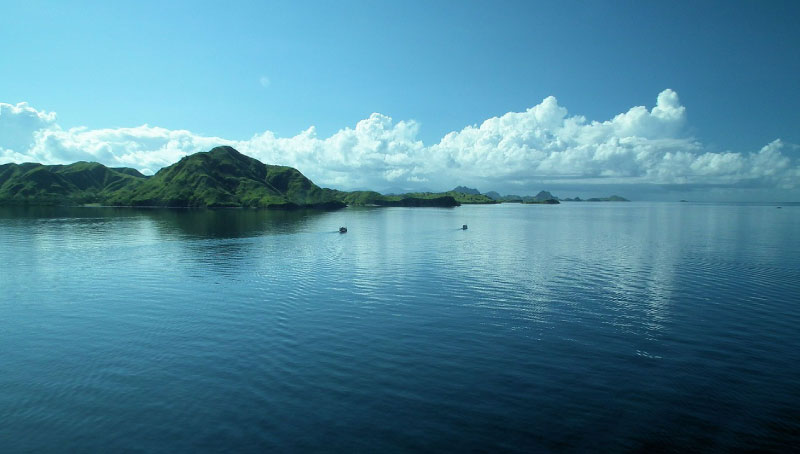
The eruption of the volcanic island Krakatoa, now part of Indonesia, is almost as famous as that of Vesuvius.
The main eruption occurred in August 1883. For several months prior to this the island, which at the time was under Dutch rule, had been the scene of increasing volcanic activity.
On the days leading up to the final explosion the activity intensified, with a near-continuous series of explosions and eruptions.
Finally, on 27th August, the eruption reached its peak with four tremendous explosions, the third of which could be heard on islands 4,800 km (3,000 miles) away! It is still thought to be the loudest sound in history.
The explosions destroyed most of Krakatoa and caused tsunamis (tidal waves) to cover many surrounding islands. Over 36,000 people drowned as a result of the eruption.
Clouds of ash emitted by the volcano caused the sky to darken all around the world. The average global temperature dropped for three years after the eruption due to the volcanic ash in the atmosphere. The ash also caused strikingly colorful sunsets in many parts of the world.
Mount St. Helens, United States

Mount St. Helens is an active volcano located in Washington State, USA. It is part of the Cascade Range, a mountain range running along the western side of North America from British Columbia in Canada to northern California, USA.
Mount St. Helens was named after a British diplomat by explorer George Vancouver.
The volcano is most famous for its devastating eruption on May 18, 1980.
An earthquake immediately preceding the eruption caused a large landslide on the North face of the mountain (the largest landslide ever recorded).
As a result of the landslide, there was less rock on the volcano to contain the immense underground pressure, and the volcano erupted almost immediately.
The huge explosion caused ash, lava and other debris to be expelled from the side of the mountain. 57 people lost their lives as a result of the eruption, which also caused the destruction of buildings, railways, forests and crops.
Eyjafjallajökull, Iceland
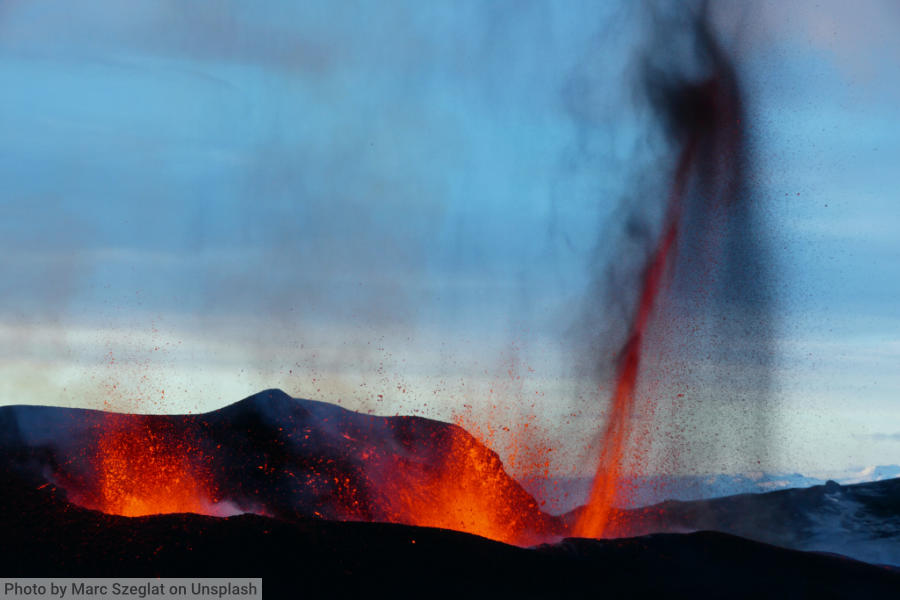
Eyjafjallajökull is a volcano located in the south of Iceland. Compared to those of other famous volcanoes, its eruption in 2010 was not particularly powerful.
Its worldwide fame is due to its relatively recent occurrence, and the fact that it affected the lives of many thousands of people.
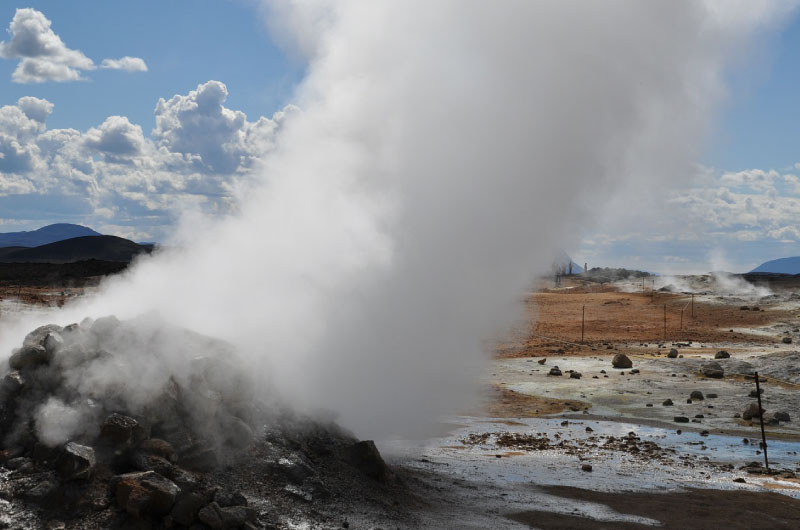
Eyjafjallajökull erupted on April 14th 2010. The eruption, which continued for a week, caused a vast cloud of ash to fill the sky. The cloud spread southwards and covered much of Europe.
Because it is dangerous for a plane to fly through an ash cloud (ash can solidify on moving parts or clog up an engine) the volcano prevented millions of people from traveling.
Mount Fuji, Japan
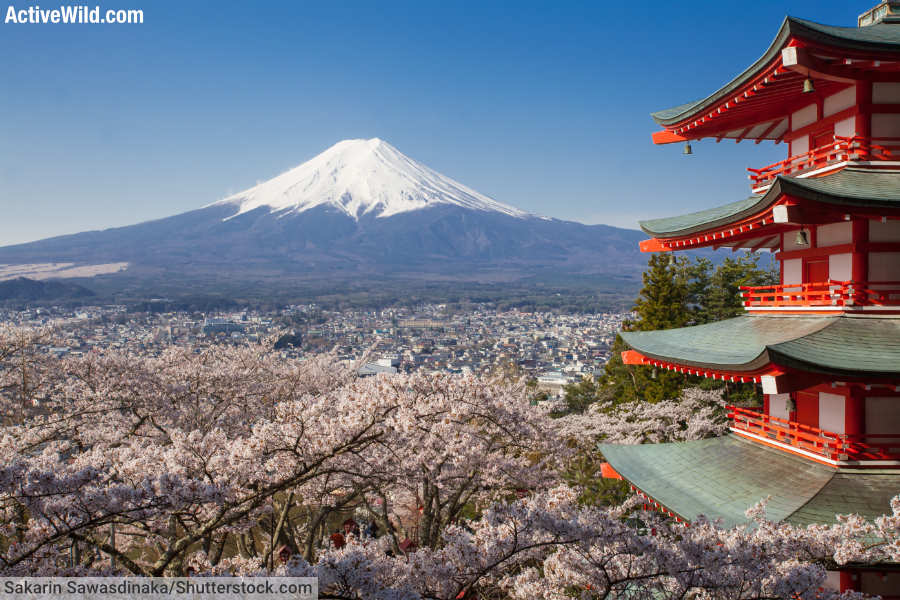
Mount Fuji, an iconic symbol of Japan, stands as the nation’s highest peak at 3,776 meters. Covered in snow for much of the year, Mount Fuji today looks a picture of peace and tranquility; a scene totally at odds with its violent past.
This stratovolcano, composed of layers of lava, ash, and volcanic rock, was formed over millennia through multiple eruptions.
A stratovolcano, also known as a composite volcano, is a tall, conical volcano composed of multiple layers of hardened lava, tephra, and volcanic ash, typically characterized by a steep profile and periodic explosive eruptions.
The base of Mount Fuji began forming approximately 100,000 years ago in the Pleistocene epoch, with its current iconic shape being the result of four major phases of volcanic activity.
The first phase, known as Sen-komitake, is hidden deep beneath the present-day mountain and consists primarily of an old andesite core. The second phase, Komitake Fuji, built upon this base with basalt deposits. The next layer was Old Fuji, and the most recent and visible layer, known as New Fuji, began forming approximately 10,000 years ago.
Mount Fuji’s most recent major eruption occurred in 1707-1708, and in known as the Hoei Eruption. This event significantly shaped the mountain's current profile and resulted in the formation of the Hoei Crater on its southeastern flank.
The mountain remains an active volcano, with its potential for future eruptions closely monitored by scientists.
Mount Pinatubo, Philippines
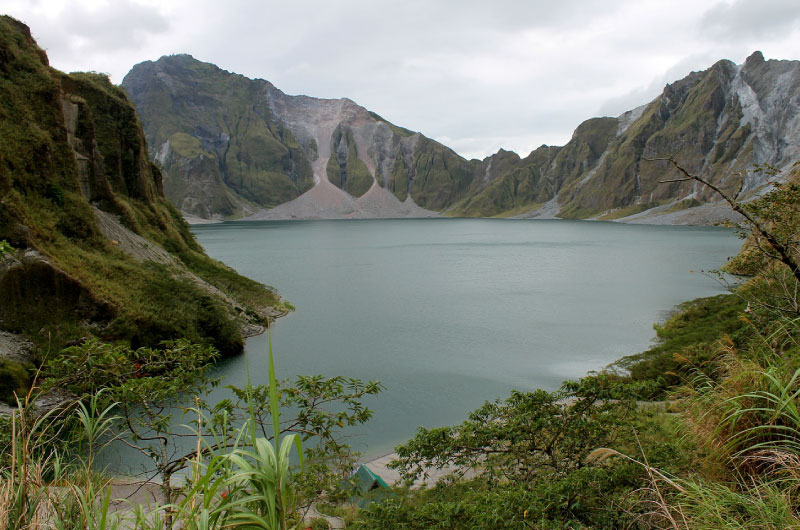
Mount Pinatubo is a volcano on the island of Luzon in the Philippines. Its eruption on June 15th, 1991 was the second largest volcanic eruption of the 20th century.
For several months prior to the main eruption there had been earthquakes and smaller ash emissions from the volcano.
Luckily, these served to warn people that Pinatubo was about to erupt. Over 58,000 people were evacuated. Although over 800 people were killed by the eruption, the disaster could have been much worse.
Popocatépetl, Mexico
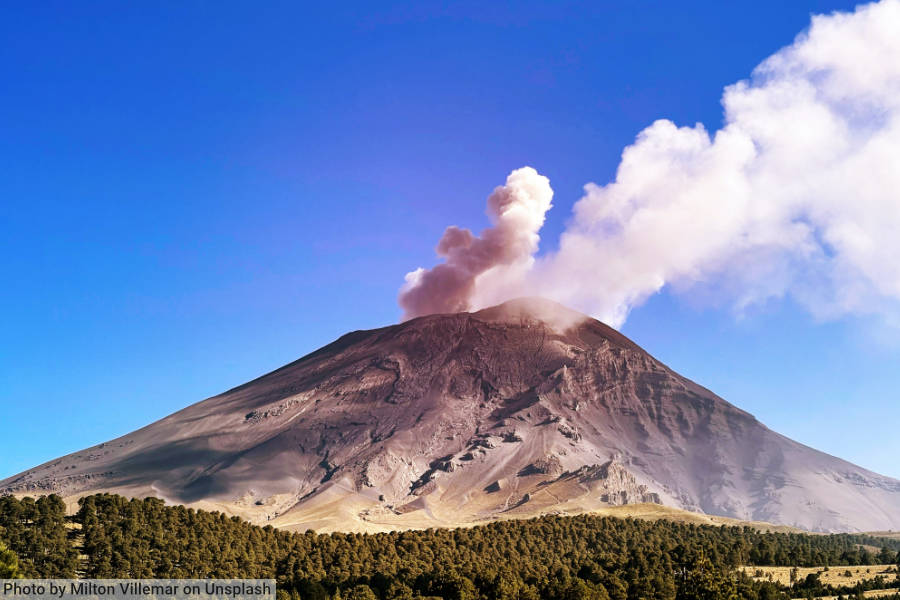
Popocatépetl, often referred to as "El Popo," is one of Mexico's most active volcanoes, situated in the Trans-Mexican Volcanic Belt between the states of Puebla, Morelos, and Mexico State. Its name is derived from the Nahuatl words for "smoking mountain," a fitting title given its frequent activity.
The volcano's structure is complex, with a symmetrical cone that rises to a height of 5,426 meters (17,802 feet), making it the second-highest peak in Mexico after Citlaltépetl.
Popocatépetl has a storied history with evidence of eruptions dating back 23,000 years. Its current activity phase began in 1994, ending decades of dormancy, and since then, there have been periodic eruptions of varying intensity, often including ash plumes, gas emissions, and pyroclastic flows.
The surrounding area, including the nearby city of Puebla, remains under constant watch for potential evacuations. The volcano is part of the Izta-Popo Zoquiapan National Park.
Mount Etna, Italy (Sicily)
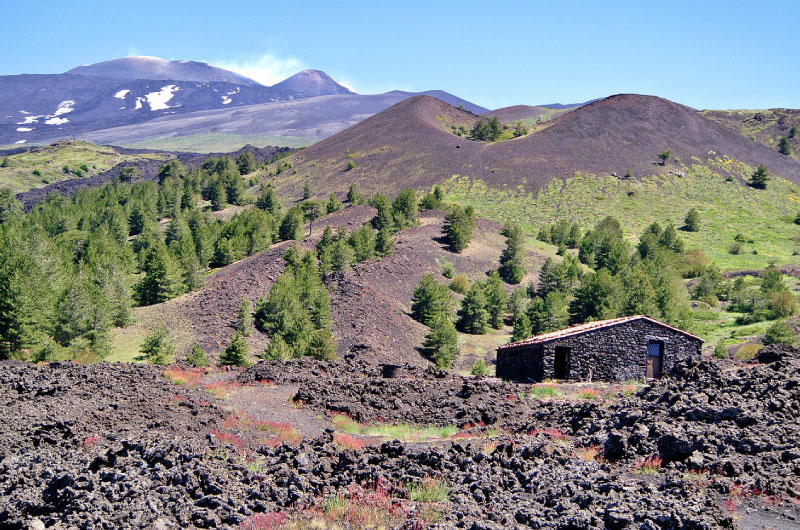
Mount Etna is the tallest active volcano in Europe. It is located on the Italian island of Sicily, which lies in the Mediterranean Sea to the south west of mainland Italy. (Sicily is the ‘ball’ being 'kicked' by Italy on a world map).
Mount Etna is the largest of Italy’s three volcanoes. It is over 2.5 times taller than Mount Vesuvius.
Living in the shadow of an active volcano actually provides some benefits to the people who live on Sicily. Not only is the volcanic soil good for growing crops in, but the volcano also attracts tourists, who spend money in the local economy.
Mount Etna has erupted regularly for thousands of years, and is still a very active volcano. Eruptions as recently as 2014 caused air traffic to be affected. You can see a news story about these eruptions here.
Mount Tambora, Indonesia
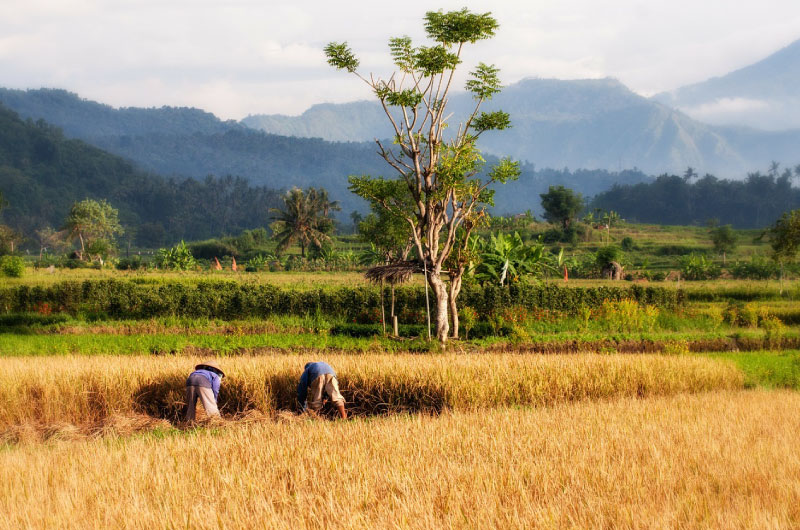
Mount Tambora is an active volcano located on the Indonesian island of Sumbawa.
Mount Tambora famously erupted on 10th April 1815, after a series of smaller eruptions. It was one of the largest volcanic eruptions in history. Explosions from the volcano could be heard over 1,600 miles away.
Many thousands of people were killed not just by the eruption itself, but also by the ash cloud and the tsunamis caused by the volcano. The eruption affected the weather all around the world.
Mauna Loa, Hawaii

Mauna Loa, which translates to "Long Mountain" in Hawaiian, is not only the largest active volcano on Earth but also one of the most impressive. It is one of two famous volcanoes in Hawaii, the other being Kilauea.
Mauna Loa is a massive shield volcano makes up more than half of the Big Island of Hawaii and rises 4,169 meters (13,678 feet) above sea level; its true enormity is hidden as its base extends deep below the Pacific Ocean, reaching down to the ocean floor.
A shield volcano is a type of volcano usually built almost entirely of fluid lava flows, with broad, gently sloping sides resembling a warrior's shield due to the low viscosity of the magma.
Mauna Loa's sprawling slopes extend for miles, contributing to its title as the world's largest volcano by volume and area.
Although Mauna Loa does not erupt as violently as other volcanoes, it does produce a large amount of lava. Luckily, this is usually relatively slow-moving (usually slower than walking pace).
Mauna Loa has a long history of activity, with its last eruption occurring in 1984. Its gentle lava flows can travel far and wide, shaping the landscape around it and adding new land to the island.
The Hawaiian Volcano Observatory keeps a vigilant watch over Mauna Loa due to its potential to impact nearby communities significantly.
Kīlauea, Hawaii, USA
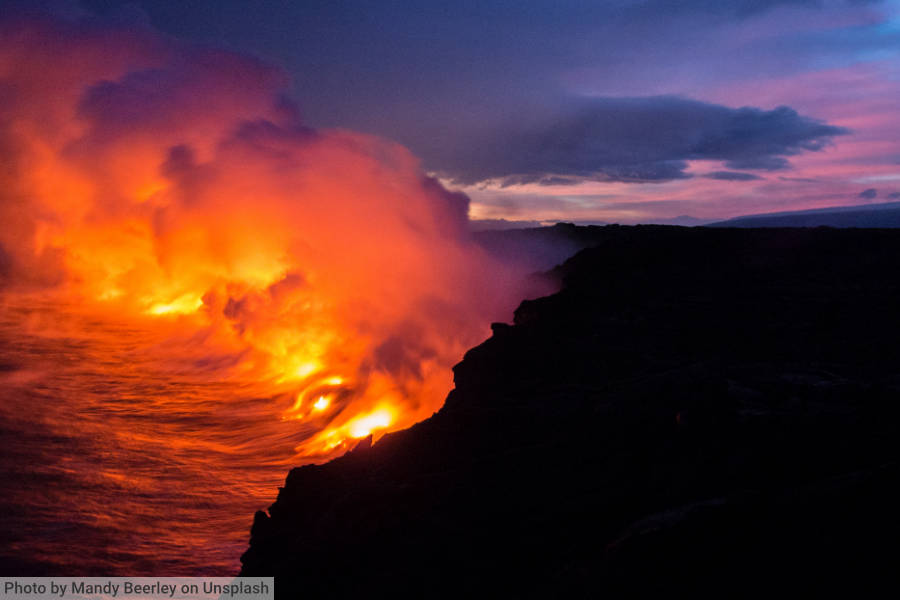
Kīlauea, located on the Big Island of Hawaii, is one of the world's most active volcanoes and a quintessential example of a shield volcano, distinguished by its broad, gently sloping sides formed by the flow of highly fluid lava.
A key feature of Hawaii Volcanoes National Park, Kilauea has been erupting persistently since 1983, making it not only an invaluable site for volcanic research but also a popular tourist attraction.
The volcano's relatively calm lava flows have created spectacular landscapes and added new land to the island's coastline.
Kīlauea stands at 1,247 meters (4,091 feet) above sea level, but its base extends about 5,000 meters (16,400 feet) beneath the sea, making it significantly taller when measured from its true base. This famous volcano’s eruptions are typically effusive, meaning that lava flows freely, creating wide lava fields. These eruptions have been monitored closely by scientists at the Hawaiian Volcano Observatory.
The cultural impact of Kilauea is deep-rooted; it is considered the home of Pele, the Hawaiian goddess of fire.
Mount Pelée, West Indies
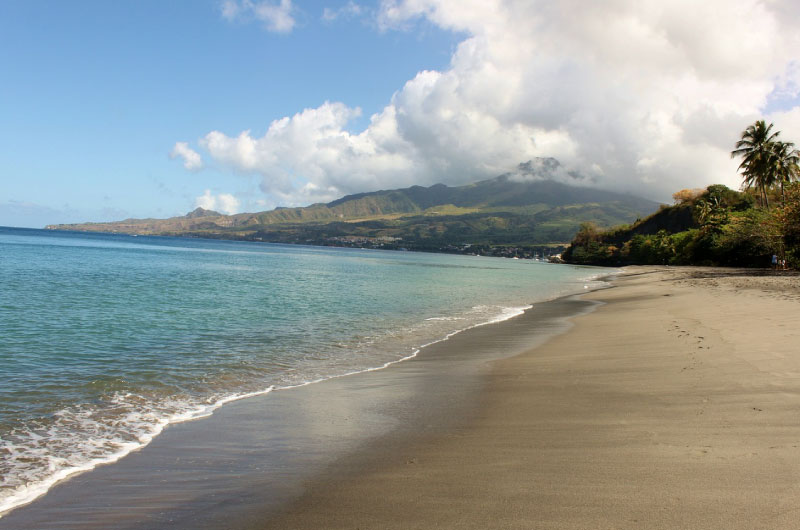
Mount Pelée is a volcano located on Martinique, an island in the West Indies.
Its eruption in May 1902 killed over 40,000 people, most of whom lived in the nearby city of Saint Pierre. Most of the fatalities were caused by fast-moving pyroclastic flows from the volcano.
A pyroclastic flow is a deadly cascade of hot gas and ash that flows from a volcano.
Only two people in Saint Pierre survived the deadly flow; one was a murderer who was serving time in the city’s prison.
Cotopaxi, Ecuador
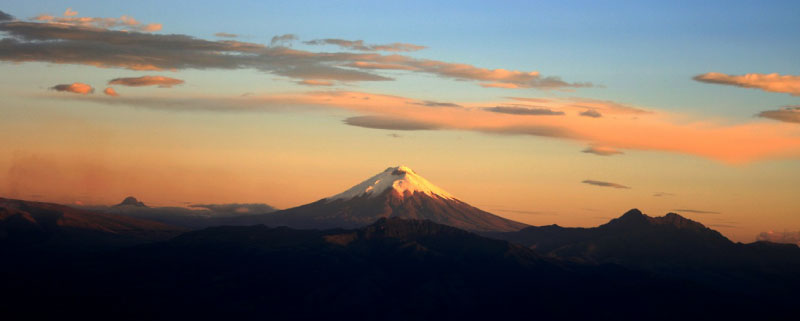
Cotopaxi is a famous volcano in Ecuador. Part of the Andes mountain range, Cotopaxi is the second highest peak in the South American country.
Cotopaxi is one of the most active volcanoes in the world. It has erupted more than 50 times since 1738. Despite this, it remains a popular destination for mountaineers.
Yellowstone Caldera, USA
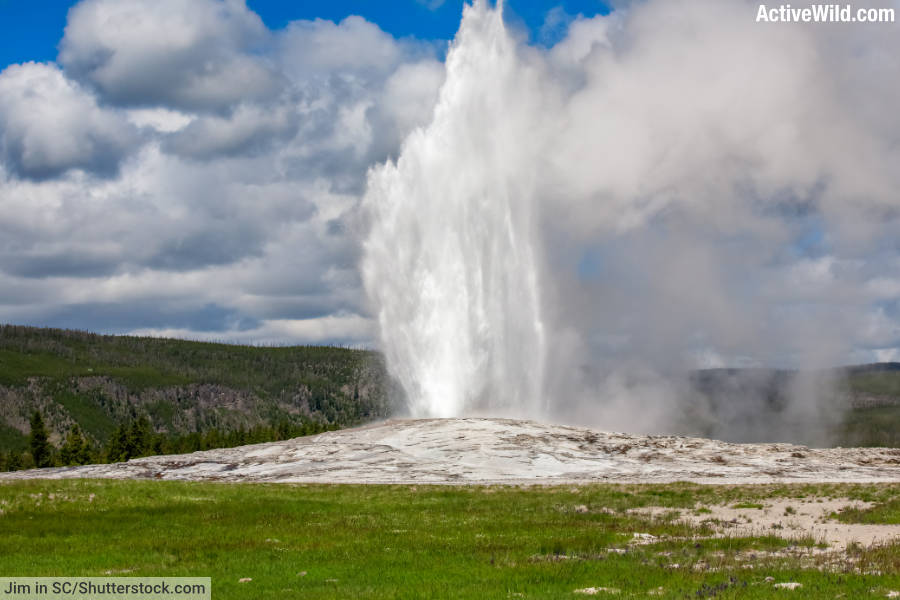
The Yellowstone Caldera, often referred to as the Yellowstone Supervolcano, is a colossal volcanic caldera located in Yellowstone National Park in the United States.
This supervolcano is the result of several massive eruptions, the first of which occurred around 2.1 million years ago. Its most recent cataclysmic event was 640,000 years ago, creating the current caldera that measures about 55 kilometers (34 miles) by 72 kilometers (45 miles).
The Yellowstone Caldera lies over the Yellowstone Hotspot, which fuels Yellowstone National Park’s numerous geysers, hot springs, fumaroles, and mud pots.
A volcanic hotspot is a location on the Earth's surface that has experienced persistent volcanic activity over a long period, typically caused by a plume of hot magma rising from deep within the mantle to the crust.
Despite its potential for large explosive eruptions, the current volcanic activity at Yellowstone is mostly limited to these geothermal features. The caldera's floor periodically rises and falls due to changes in magma chamber pressure, an indication of the dynamic nature of the region's subterranean forces.
The supervolcano has a monitoring and alert system managed by the Yellowstone Volcano Observatory, which keeps a close eye on seismic activity, ground deformation, and other geophysical parameters. The implications of a major eruption would be profound, impacting global climate and ecosystems.
The Yellowstone Caldera remains a subject of intense study, fascination, and sometimes concern, given its explosive history and the scale of its potential future activity.
Famous Volcanoes: Conclusion
A thin crust is all that separates us from a fiery world of molten rock and unimaginably strong natural forces. Occasionally, in the shape of a volcano, those forces break through into our world.
Although more is known about volcanoes today than at the time of Vesuvius, they still serve as a powerful – and sometimes deadly – reminder of the power of nature. Despite knowing all that we know, we can’t prevent a volcano from erupting!
We hope that you've enjoyed reading about these famous volcanoes. This list is by no means exhaustive; there are many more volcanoes around the world, many of which are active today.
Let us know in the comments below if you've ever been to any of the volcanoes listed above, or if you know of any that aren't on the list; we'd love to hear about your volcano adventures!
Discover More with Active Wild
- You'll find more amazing science articles here Science Articles at Active Wild
- Discover more about volcanoes here: Volcano Facts For Kids & Adults

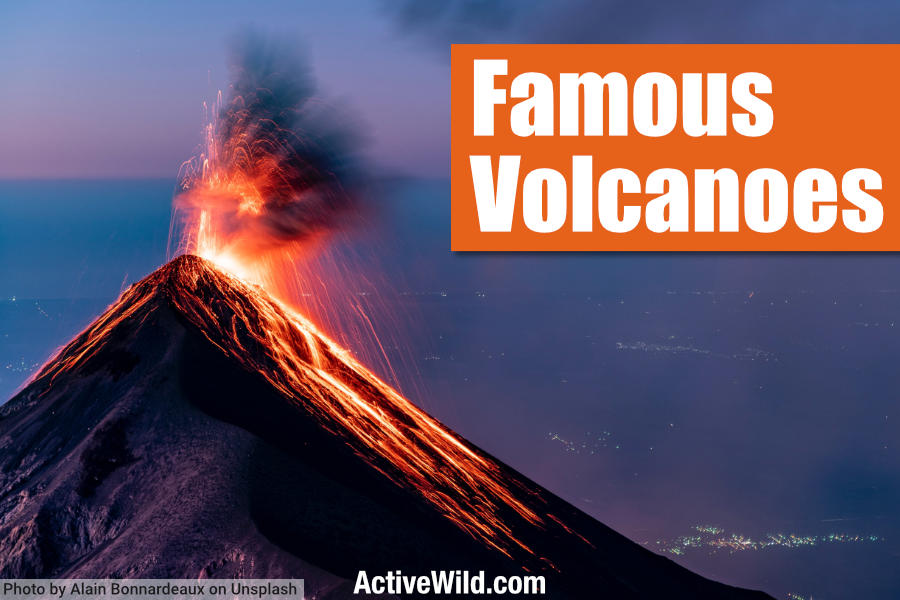
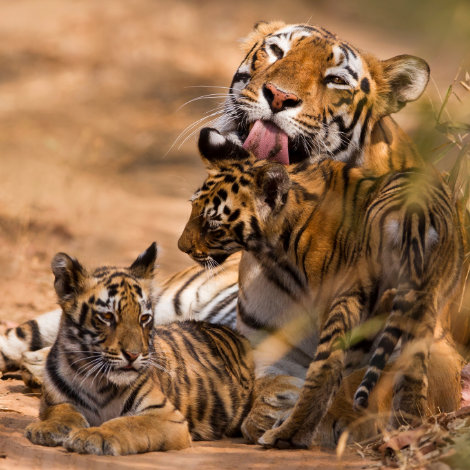
this is cool, but if this list was extended where would be mt. sant helens? just asking.
this is cool, but if this list was extended where would be mt. sant helens?
I am really interested in volcanoes and Pompeii and all and I really liked this article thank you so much
same here,It got me a A+ on my slides because of this presentation
Thank you! the information on Mount Vesuvius helped me learn a lot. Before I just heard about it but didn’t know much. I think it really helped expand my knowledge on famous volcanoes.
What is the least deadly volcano?
Mount St. Helens, Washington State USA
this is so cool this help me on my homework epic this active wild website is so good shout out and let’s go so cool shout out to active wild let’s go
You guys should do a 20, instead of a ten so Mount Fuji’s in there.
this helped me get an A on a class assignment
Awesome! 🙂
This helped me a lot
it helped me with my homework really well
This really helped me because I was mad about not finding famous volcano facts
helped me with school work <3
Where are most volcanos located?
Great Question!
Most volcanoes are found where tectonic plates (slowly moving layers of the Earth’s crust) are either coming together or moving away from each other.
This includes the “Pacific Ring of Fire”, which roughly follows the edges of the Pacific Ocean and the “East African Rift”, which runs through several East African countries.
We hope this helps!
Regards,
The Active Wild Team
helped me with my homework💻💻👌
I got an A on my essay! Thank you!
Awesome! Well done! 🙂
Thank you this really helped me with my homework, there are not very many sites where you can find good information like this! 👌😯
I know!
exactly!
Me to! This is the only site I could use.
thank you i got an a on ny book report